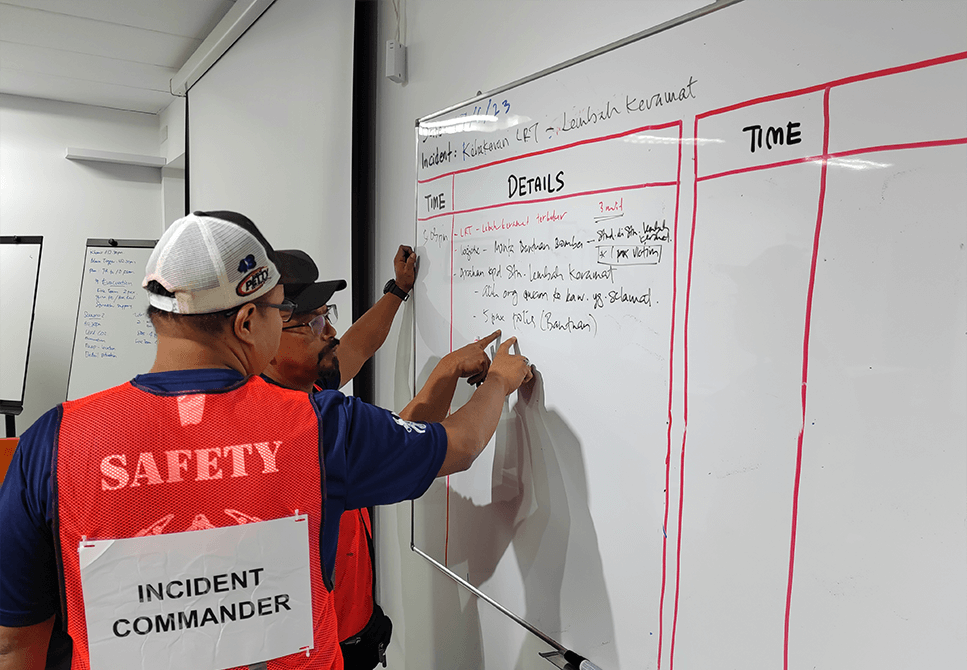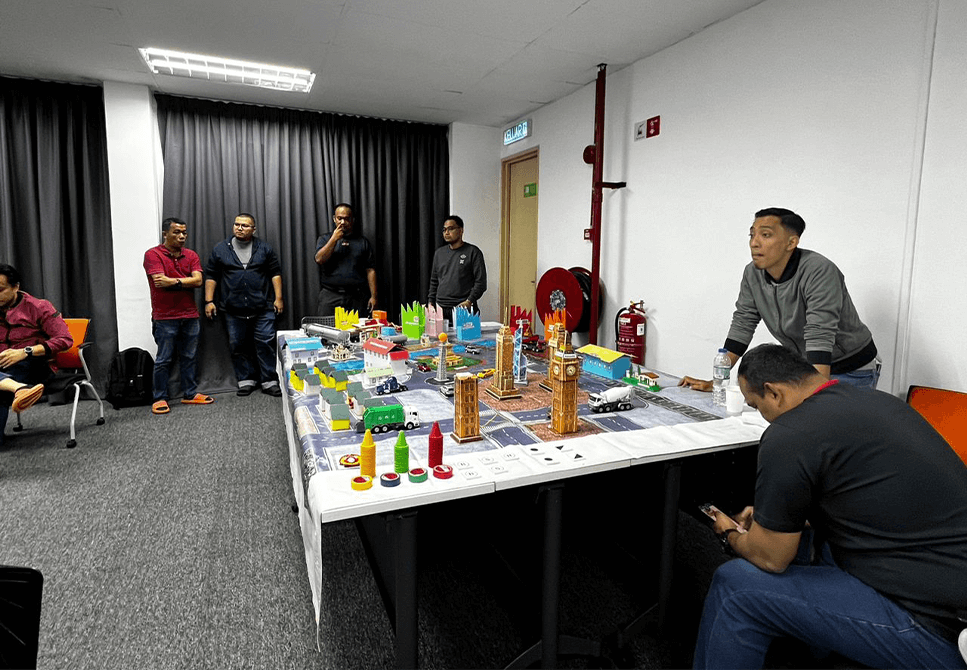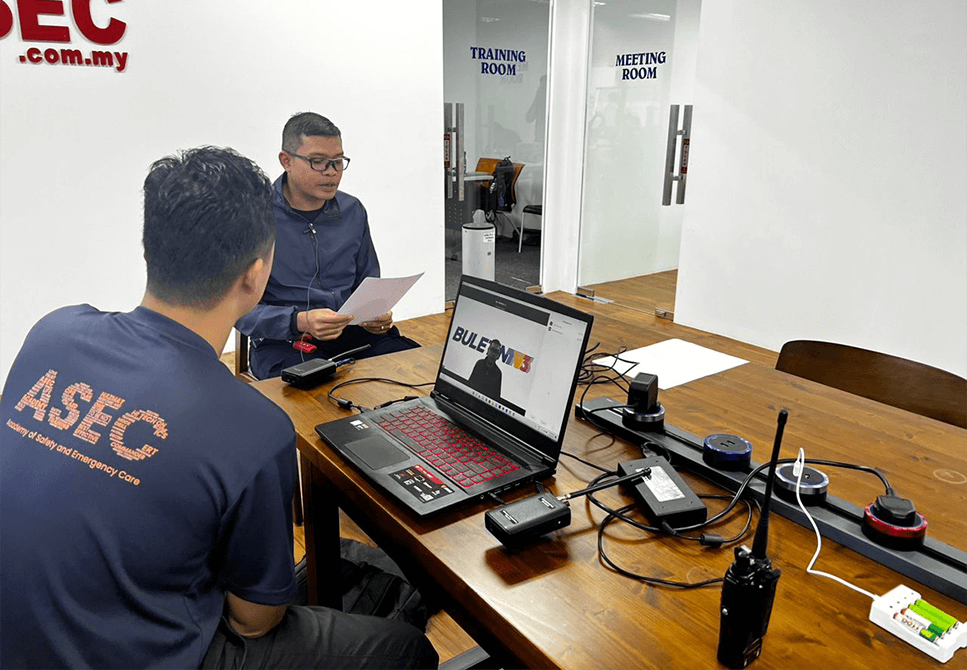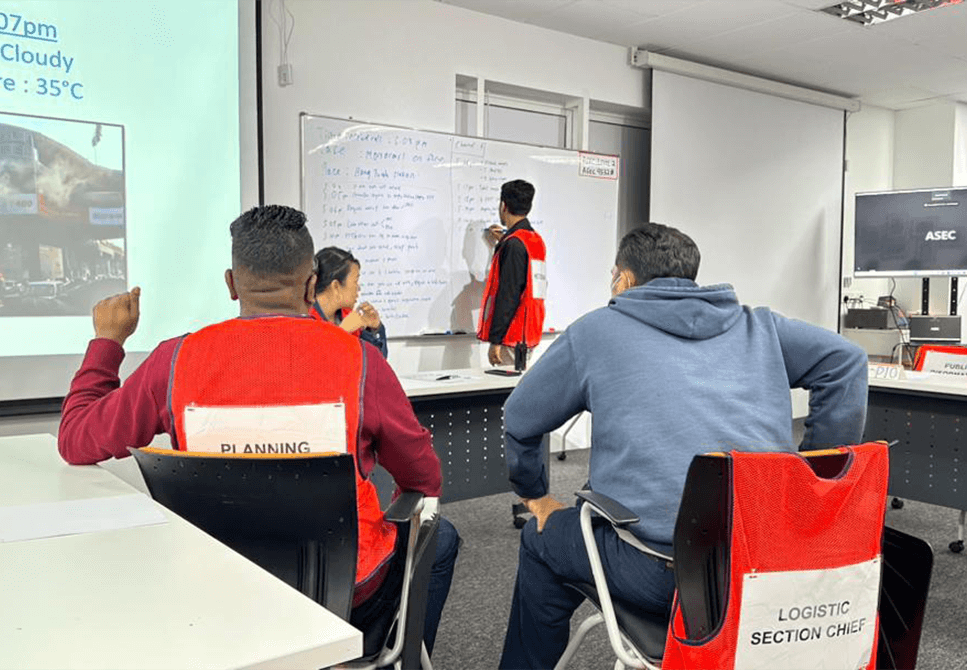Incident Commander & Crisis Management Team Development Programme
3 Days │ Certificate of Competency │ HRD Corp Claimable
When a major incident escalates beyond site control, the link between on-scene response and corporate crisis management becomes critical.
The Incident Commander & Crisis Management Team (ICCMT) programme equips leaders to manage large-scale emergencies through structured command, coordination, and communication.
By the end of this programme, participants will be able to:
Apply Incident Command System (ICS) principles to complex emergency situations.
Coordinate effectively between the On-Scene Commander and Crisis Management Team.
Manage information flow, decision-making, and resource prioritisation during crises.
Develop and activate a Crisis Management Centre and response protocols.
Conduct debriefings and implement continuous improvement measures after incidents.
Senior Managers and Department Heads
Crisis Management Team (CMT) Members
Safety and Security Managers
Business Continuity and Risk Management Professionals
A well-prepared Crisis Management Team can make the difference between quick recovery and lasting damage.
This programme builds leaders who can think clearly, communicate effectively, and coordinate multiple units under pressure.
It ensures your organisation has the structure and confidence to respond to any large-scale emergency with control and credibility.
ICCMT Development Program conducted at ASEC
For organizations that value the employees’ preparedness in facing possible crisis involving the public and surrounding communities.










